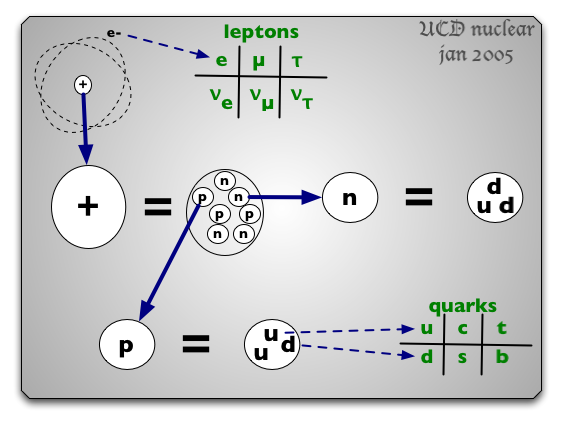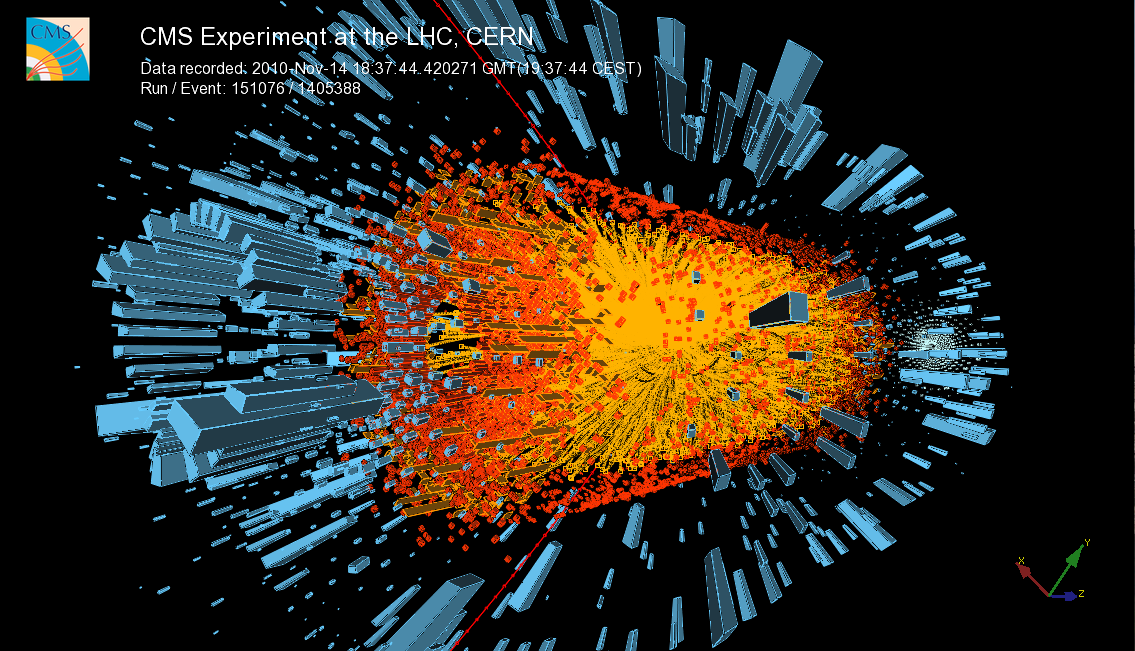The goal of our research is the study of collisions between relativistic nuclei and ultimately the determination of the properties of nuclear matter over a wide range of temperatures and densities. Extremely hot or dense objects which are made of nuclear matter exist in the cosmos. However, without the possibility of direct study of neutron stars, supernovae, or the Big Bang, one resorts to the challenging studies of finite and short-lived systems as provided by nucleus-nucleus collisions.
It has become clear that in order to understand the nuclear equation of state or to identify a transistion to a new state of matter, the quark-gluon plasma, it will require a comprehensive and correlated set of measurements as well as extensive calculations which relate the observables to the nuclear matter variables.
This project focuses on the acquisition and analysis of such a set of data using the Solenoidal Tracker at RHIC (STAR) experiment at the Relativistic Heavy Ion Collider (RHIC) located at Brookhaven National Laboratory, and the Compact Muon Solenoid (CMS) experiment at the Large Hadron Collider located at CERN. The collection of detector systems which make up the STAR and CMS experiments provide detailed information about individual collision events. The UCD group use the data from these detectors to reconstruct the events and infer, from the recorded debris, both the dynamics and the thermodynamics of the collision.
Our group uses the STAR central Time Projection Chamber to continue the study of transverse, elliptic, radial, and longitudinal flow. These studies of the hydrodynamical behavior of nuclear matter allow one to study its compressibilty, and hence the nuclear equation of state.
We also focus on heavy quark production with both STAR and CMS. We study the production of Upsilon mesons, which are made of bottom and anti-bottom quarks. The diagram at the bottom shows how protons can be made of three "light" quarks (up, up, down, or u, u, d). There are 6 quarks in total: up, down, charm,strange, top, and bottom. The bottom quarks are called "heavy" because a single bottom quark is almost 5 times as massive as a proton.

Particles that are made of bottom quarks are sensitive to the temperature and density of the system. If the Quark-Gluon Plasma exists, it is possible for the Upsilon mesons to have a weaker binding. We therefore study the Upsilon family, the ground state and the excited states, to look for evidence of this melting. In addition, a single bottom quark traversing through the Quark-Gluon Plasma is expected to lose energy through radiation or collisions with other particles in the plasma. These are challenging measurements, because we need to look through more than a billion collisions to find an event which can have a bottom quark (or two) in the decay channel were we can reconstruct them. They particles are long-lived compared to the lifetime of the Quark-Gluon Plasma, but they decay very close to the collision vertex. The Upsilon meson decay products are indistinguishable from other primary decay tracks, but we can find them by accumulating many events with the proper decay channels. In the picture below, we see a PbPb collision in CMS. There is a lot of activity, with many tracks in the central region of the detector. However, two tracks marked in red are clearly visible in the outer parts of the detector. Only muons make it to the outside and this allows us to tag the event as a possible Upsilon candidate, since the Upsilons can decay into muon-antimuon pairs Studying many events with bottom quarks for hints of melting, and also looking for evidence of bottom quark energy loss, is possible thanks to the state of the art technology at CMS and STAR.

One of the first things that students joining our group get to do is to do a computer simulation of nucleus-nucleus collisions. One can study the distribution of nucleons in the nucleus and calculate the number of nucleon-nucleon collisions that occur in a single nucleus-nucleus collision. Each nucleon-nucleon collision can produce thousands of particles, which are then observed in the particle detectors like the picture above. The simulations of the nucleus can lead to pictures like the one below, which illustrates a nucleus of gold (Au), with neutrons and protons distributed in space according to the Woods-Saxon distribution, found to describe the density of many nuclei.
